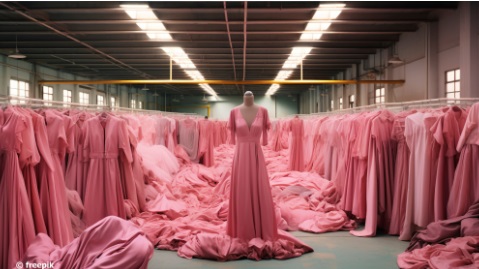Who doesn’t recognise it? The famous “checkerboard pattern,” the renowned buckle, or the distinctive combination of white, black, and red stripes. Some brands have made it — they are recognised from afar and can be easily identified. And this ‘effect’ is precisely what those who wear these brands count on. They have also made it; they can afford to wear a luxury item and are more than happy to show it off.
But how did it come to be in our society, that certain luxury items could achieve such ‘dominance’? How is it possible that objects define our being? Questions like these arise and don’t even touch on the underlying question: Who produces these items?

JUST A THOUGHT…

One could argue that most people here—in Austria—have at some point heard that cheap clothing is often produced under devastating conditions. Countries like Bangladesh, Pakistan, or India still top the charts when it comes to questionable conditions in the textile industry.
BUT WHAT ABOUT LUXURY BRANDS?
At the beginning of July this year, a recent case was made public. During a raid, a factory of the luxury brand Dior was visited—the outcome: the workers had to sleep in the factory, and the machines ran around the clock. Even the safety precautions were removed to speed up production. However, these conditions are not an isolated case. The Milan court ordered the “manufacturers” of Dior to be placed under judicial supervision for a year.
But Dior isn’t the only ‘black sheep’ here. As early as April, “Giorgio Armani Operation Spa” was placed under forced administration. Here, too, the accusation revolves around the exploitation of employees.
IN THE SHADOW OF MEMORY
Many songs and texts address the issue of exploitation—in both the textile and footwear industries. Who among us still thinks about what it means to buy leather shoes and questions the manufacturing process? For years, there have been reports of catastrophic conditions, including in small tanneries in Indonesia. People work around the clock and are exposed to substances like Chromium VI. Through the tanning process, Chromium III can form, causing cancer as well as skin and eye irritations. But what can be done when there is no awareness of these effects, and there is fundamentally no medical care available?

The problem is that many people prefer to work under inhumane conditions than not work at all. The textile and footwear industries build on this concept. Huge factories are operated to produce quickly and cheaply—there are plenty of people looking for work. If one person drops out, they are simply replaced by another.
Translated by Anna Smith
#fastfashion #markenkleidung #billigproduktion #luxuslabels #AgainstHumanTrafficking #GegenMenschenhandel #EndExploitation #EndTrafficking #HopeForTheFuture #Österreich
